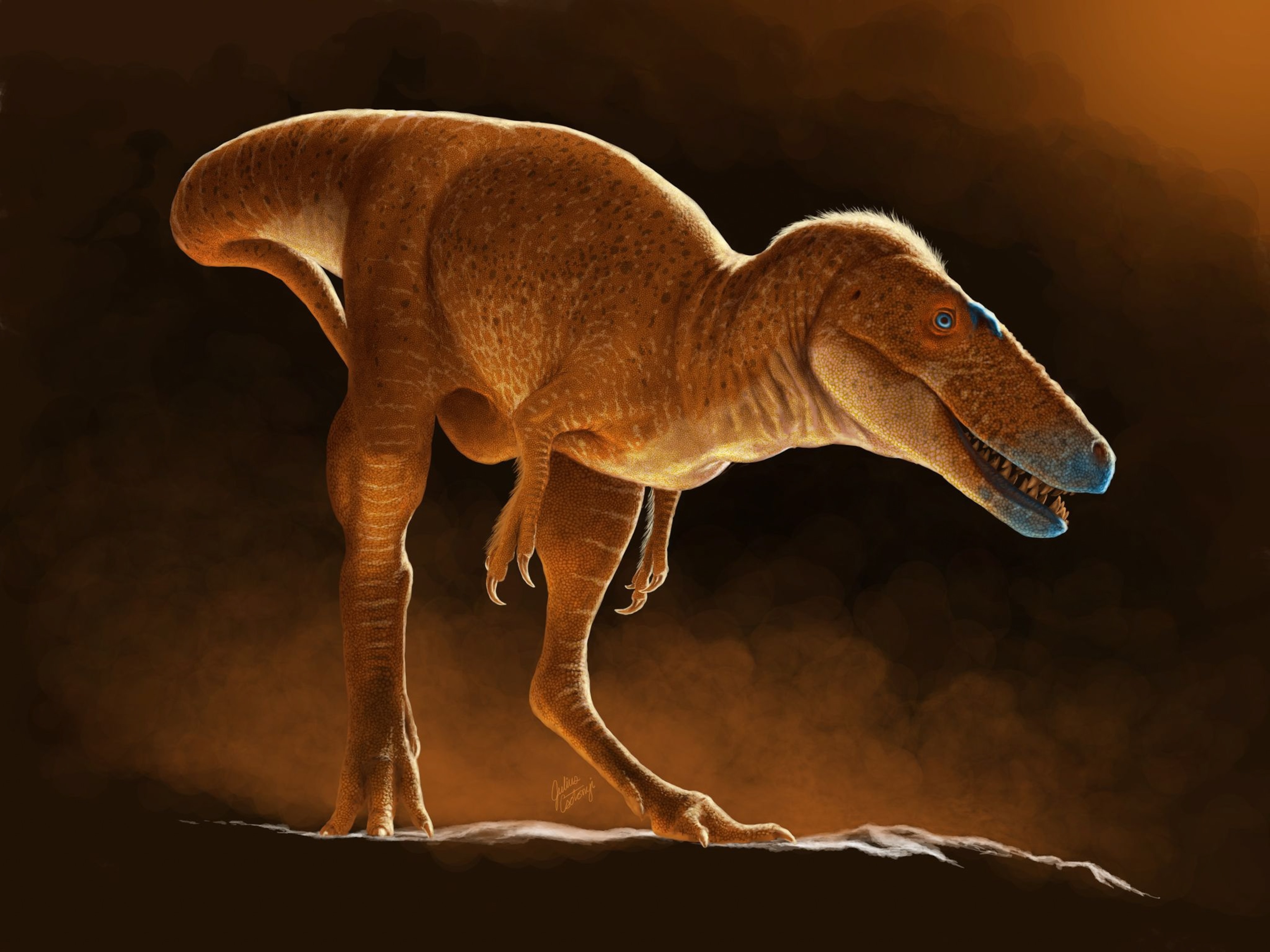
T. Rex Plodded Like an Elephant, Nerve Study Says
The mighty Tyrannosaurus rex didn't have the nerves—literally—to be a fast, agile killing machine, a new study says.
The mighty Tyrannosaurus rex was no quick, agile killing machine—the "tyrant king" dinosaur just didn't have the nerves.
Instead, most times T. rex probably plodded along like an elephant, according to a new study that estimated the "speed limit" of nerve signals running through the dinosaur's body.
(Related: "T. Rex Was Slow-Turning Plodder, Study Suggests.")
When a vertebrate—an animal with a backbone—stubs its toe, electrical signals get carried from the toe to the spinal cord by a nerve, which is made up of bundles of long, fiberlike cells.
Since the researchers couldn't study a T. rex's nerves directly, the team looked at how nerves work in a range of modern animals, from the tiny shrew to midsize dogs and pigs to massive Asian elephants.
(Related: "'Dinosaur Mummy' Found; Has Intact Skin, Tissue.")
The scientists found that, for all body sizes, nerves have a basic speed limit of about 180 feet (55 meters) a second. That's the fastest a signal can travel from an animal's feet to its spinal cord—the kind of signal that's essential for walking and running.
At that speed limit, big animals such as elephants can't run too fast or they're effectively running blind.
Suppose an elephant steps on a pebble, said study leader Max Donelan of Simon Fraser University in Burnaby, Canada. If the pachyderm was running fast, "its foot would be nearly off the ground before it could do something in response to that troublesome pebble."
The same goes for T. rex, said study co-author John Hutchinson, an expert on dinosaur movement at the Royal Veterinary College in London.
"Nerves are nerves—in vertebrates anyway," Hutchinson said. "So the principles will apply generally to dinosaurs, too."
T. rex Would Still Have Been Impressive, Exciting
According to the study, there's a trade-off between the number of nerve cells in a bundle and how fast the nerve can transmit a signal.
For a big animal such as an elephant to be as fast as a shrew and still feel every step, the elephant's nerves would have to be 100 feet (30 meters) thick—clearly impossible.
Instead, elephant nerves can either be relatively slow and sensitive or fast and dulled.
As long as a bus and weighing around 6.5 tons, the average T. rex would also have needed to move slowly to feel with its feet, according to the study, which appears Wednesday in the Proceedings of the Royal Society B.
The idea that T. rex lumbered like an elephant fits with other studies of the dinosaur's body, including one paper that found that T. rex's leg muscles would have to have been heftier than its whole body weight for the dinosaur to have been a speed demon.
"To be agile, Tyrannosaurus would need to be both all muscle and all nerve," Simon Fraser's Donelan said.
(Related: "'Mighty' T. Rex Mostly Picked Off Youngsters?")
Nonetheless, elephants can occasionally get up to a fast clip, sometimes charging fast enough to catch people. Ditto for big dinosaurs, the Royal Veterinary College's Hutchinson said.
Tyrannosaurus rex were "by no means slow, sluggish, ponderous, clumsy animals. They still would have been impressive and exciting to see, and capable of surprising feats from time to time."





